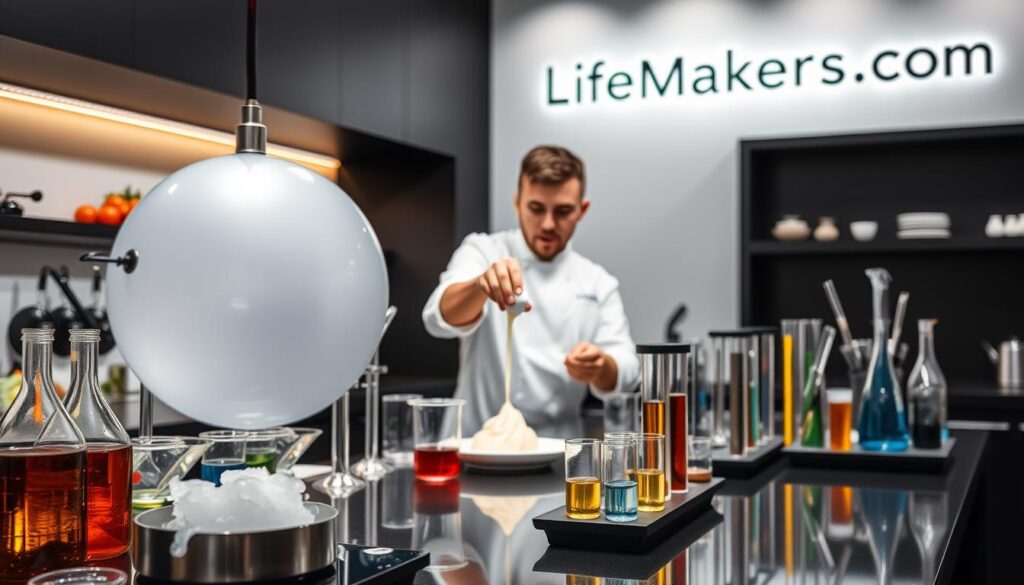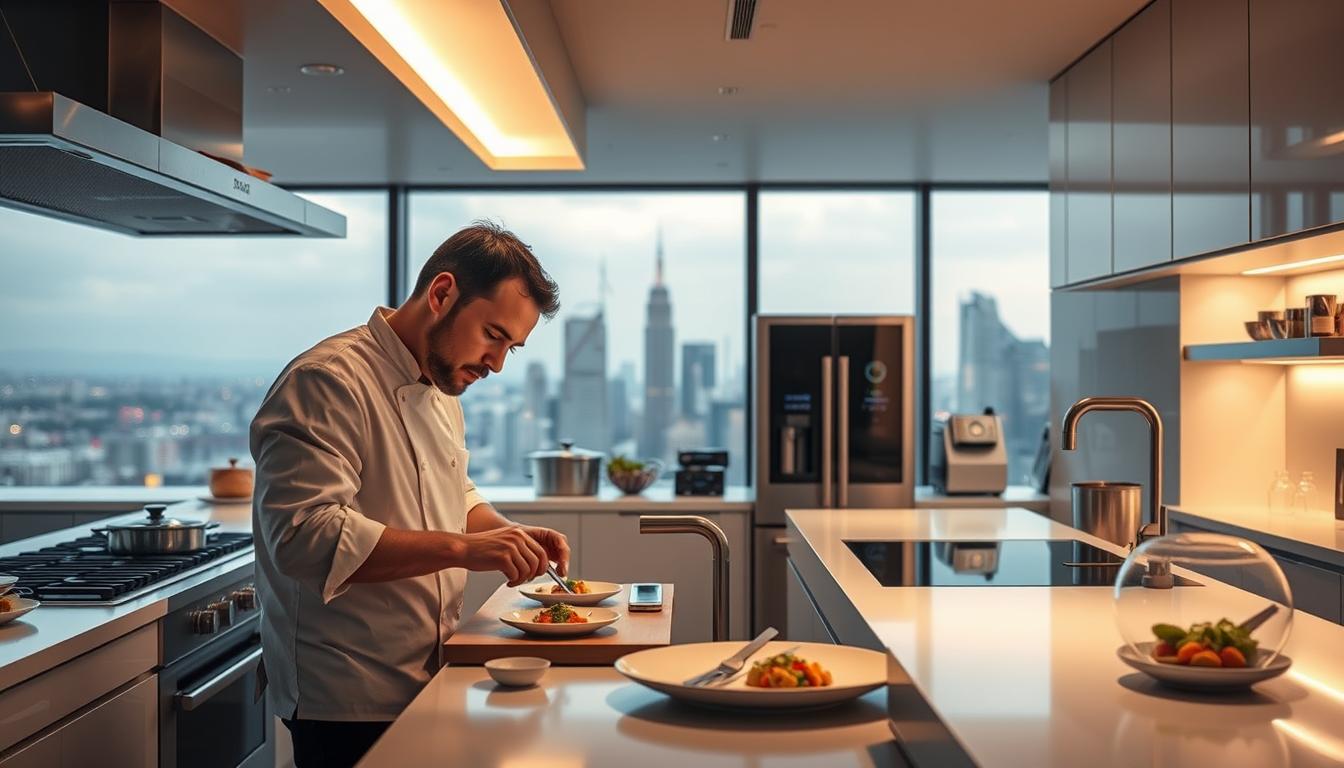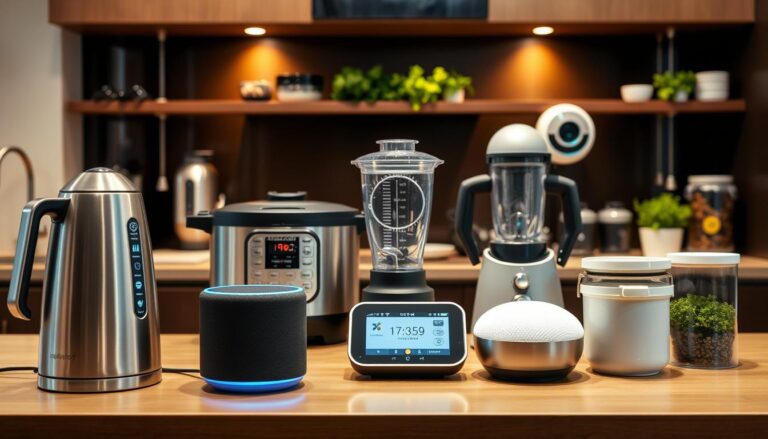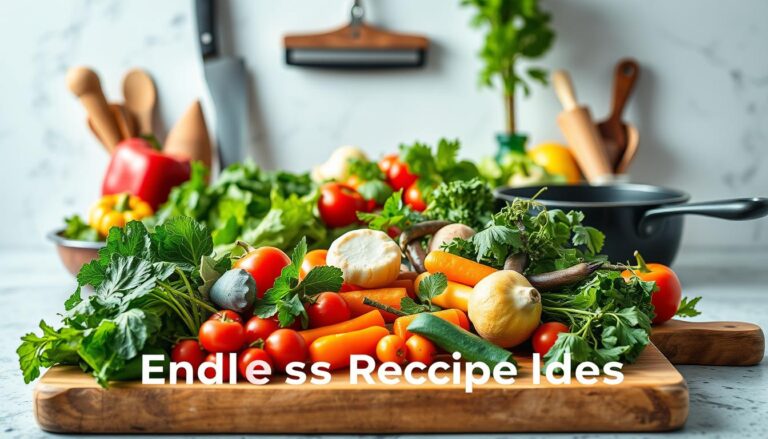Modern Cooking: Elevate Your Culinary Skills
The art of preparing food has evolved significantly over the years. Today, innovative methods blend science and creativity to transform traditional recipes into extraordinary dishes. This approach not only enhances flavors but also makes the entire experience more enjoyable and rewarding.
Whether you’re a beginner or a seasoned enthusiast, exploring these techniques can take your skills to the next level. From precision tools to advanced methods, there’s always something new to learn. A professional website dedicated to culinary arts can be an invaluable resource, offering tips, tutorials, and inspiration.
By embracing these changes, you can create meals that are not only delicious but also visually stunning. Let’s dive into the tools and techniques that can help you elevate your kitchen performance and make every meal a masterpiece.
Key Takeaways
- Innovative methods are transforming traditional recipes.
- Science and creativity play a key role in contemporary food preparation.
- Professional websites offer valuable resources for culinary enthusiasts.
- Advanced tools and techniques can enhance your skills.
- Every meal can become a visually stunning and delicious experience.
Introduction: Elevate Your Culinary Journey
From ancient techniques to cutting-edge methods, the culinary world continues to evolve. This journey reflects how food preparation has adapted to changing tastes, tools, and trends. Today, diners seek distinctive experiences, pushing chefs and home cooks to innovate like never before.
Understanding the Evolution of Culinary Arts
The history of food preparation is rich and diverse. Early methods focused on survival, using simple tools and local ingredients. Over time, these techniques became more refined, influenced by culture, trade, and technology.
For example, fermentation—once a preservation method—is now celebrated for its unique flavors. Similarly, traditional roasting has evolved into precision methods like sous vide. These changes highlight how culinary arts adapt while honoring their roots.
The Rise of Innovative Cooking Methods
Innovation has reshaped how we approach food. Diners today value creativity and presentation as much as taste. This shift has led to techniques like molecular gastronomy, which blends science and art to create unforgettable dishes.
Online pages and blog posts play a key role in sharing these innovations. They provide tutorials, recipes, and inspiration for enthusiasts at every skill level. This accessibility has made advanced techniques more approachable for home cooks.
| Traditional Technique | Modern Innovation |
|---|---|
| Fermentation | Kombucha, kimchi |
| Roasting | Sous vide precision |
| Boiling | Spherification |
Dining location preferences have also influenced kitchen trends. Home cooks now recreate restaurant-quality meals, using tools and methods once reserved for professionals. This shift has made the culinary journey more personal and rewarding.
By understanding these changes, you can appreciate the depth of culinary arts. This foundation sets the stage for exploring advanced techniques and tools in the sections ahead.
Essential Tools and Equipment in the Modern Kitchen
The right tools can transform your kitchen into a powerhouse of efficiency and creativity. Whether you’re a home cook or a professional, having the right equipment ensures precision and consistency in every dish.
Start with the basics. A high-quality chef’s knife, like the Victorinox 8 Inch Fibrox Pro, is a must. It’s versatile, durable, and perfect for chopping, slicing, and dicing. Pair it with a reliable cutting board—wooden for aesthetics or plastic for easy cleaning.
Measuring tools are equally important. The Kitchenmade measuring cups and OXO Good Grips whisk ensure accuracy in recipes. For mixing, a sturdy set of metal bowls is ideal—they’re durable and won’t absorb odors.
Advanced tools like immersion blenders and sous vide machines elevate your cooking game. The Cuisinart Multiclad Pro cookware line offers even heat distribution, while a Nordic Ware baking sheet pan handles heavy use with ease.
“Investing in quality tools is investing in your culinary success.”
An optimized kitchen layout is just as crucial. Ensure ample space for prep work and easy access to tools. A well-organized space reduces stress and boosts efficiency.
Skilled staff play a key role in utilizing these tools effectively. Training ensures everyone knows how to maximize each piece of equipment, from knives to blenders.
| Tool | Purpose |
|---|---|
| Chef’s Knife | Chopping, slicing, dicing |
| Measuring Cups | Accurate ingredient measurement |
| Immersion Blender | Blending soups and sauces |
| Sous Vide Machine | Precision temperature control |
When selecting equipment, prioritize versatility and durability. Look for tools that serve multiple purposes, like the Cuisipro 7-in-1 box grater. This approach saves space and enhances efficiency.
Finally, don’t overlook the importance of maintenance. Keep knives sharp, clean tools promptly, and store them properly. A well-maintained kitchen ensures longevity and peak performance.
By equipping your kitchen with the right tools and optimizing your space, you’ll create meals that are both delicious and visually stunning. Happy cooking!
Fundamentals of Modern Cooking Techniques

Every chef, whether novice or expert, benefits from learning foundational culinary techniques. These methods form the backbone of exceptional dishes, blending precision with creativity. Let’s explore the essentials that can transform your kitchen experience.
One key technique is sous vide, which uses precise temperature control to cook food evenly. Unlike traditional methods, this approach ensures consistent results every time. Another essential is spherification, a method that turns liquids into delicate spheres, adding a unique touch to dishes.
Precision with ingredients is equally important. Measuring tools like scales and thermometers ensure accuracy, while fresh, seasonal produce enhances flavor. For example, summer cucumbers in tzatziki crostini highlight the value of local ingredients.
Understanding culinary terms is also crucial. Words like “emulsification” or “caramelization” might sound complex, but they’re simple concepts once broken down. This knowledge empowers you to follow advanced recipes with confidence.
“Mastering these techniques is the first step toward culinary excellence.”
Here’s a quick comparison of traditional and contemporary methods:
| Traditional Technique | Modern Method |
|---|---|
| Boiling | Spherification |
| Roasting | Sous Vide |
| Frying | Emulsification |
To refine these techniques, practice regularly and experiment with new recipes. Start with simple dishes and gradually incorporate advanced methods. This approach builds confidence and skill over time.
By mastering these fundamentals, you’ll create dishes that are not only delicious but also visually stunning. Embrace the journey, and let your creativity shine in every meal.
Precision Cooking with Sous Vide Methods
Sous vide cooking has revolutionized how we approach precision in the kitchen. This technique uses precise temperature control to cook food evenly, ensuring consistent results every time. Whether you’re preparing a steak or vegetables, sous vide delivers unmatched flavor and texture.
Benefits of Precise Temperature Control
One of the standout features of sous vide is its ability to retain flavor and nutrients. Unlike traditional methods, this process locks in moisture, resulting in tender, juicy proteins. Studies show that sous vide can retain up to 90% of nutrients in vegetables, making it a healthier option.
Another advantage is consistency. With variations as small as 0.1°C, you can achieve the exact doneness you desire. This precision eliminates guesswork, making it ideal for both amateur and professional cooks.
Step-by-Step Sous Vide Process
Ready to try sous vide? Here’s a simple guide to get started:
- Season your food: Add herbs, spices, or marinades to enhance flavor.
- Vacuum-seal: Place the food in a vacuum-sealed bag to ensure even cooking.
- Set the temperature: Use your sous vide machine to set the desired temperature.
- Cook: Submerge the bag in water and let the machine work its magic.
- Sear for finish: After cooking, sear the food briefly for a crispy exterior.
This process is not only efficient but also frees up your time. You can focus on other tasks while your meal cooks to perfection.
“Sous vide transforms the way we cook, offering precision and consistency in every dish.”
By mastering this technique, you’ll elevate your culinary skills and create meals that are both delicious and visually stunning. Start with simple recipes and experiment to discover the endless possibilities of sous vide cooking.
Exploring Molecular Gastronomy Innovations

Molecular gastronomy brings science and creativity to the kitchen. This innovative approach transforms ordinary ingredients into extraordinary dishes. By experimenting with textures and flavors, you can create unforgettable dining experiences.
Spherification and Liquid Nitrogen Techniques
Spherification is a standout technique in molecular gastronomy. It uses sodium alginate to turn liquids into delicate spheres. These edible pearls add a unique touch to dishes, from cocktails to desserts.
Liquid nitrogen is another game-changer. It freezes ingredients instantly, creating dramatic textures and presentations. For example, you can make instant ice cream or frozen foams that melt in your mouth.
“Molecular gastronomy isn’t just about science—it’s about pushing boundaries and reimagining what’s possible.”
Creating Exciting Foams and Gels
Foams and gels are essential in molecular gastronomy. They add visual and textural appeal to dishes. Foams, made with lecithin, can be savory or sweet, like a basil foam on soup or a chocolate foam on dessert.
Gels, created with agar-agar or gelatin, offer versatility. They can be used to create everything from translucent sheets to firm cubes. These elements elevate the dining experience by engaging both the eyes and the palate.
Embracing change and experimentation is key. By stepping out of your comfort zone, you’ll discover new techniques that can transform your meals. Keep an open mind, and don’t be afraid to try something unconventional.
| Technique | Key Ingredient | Example |
|---|---|---|
| Spherification | Sodium Alginate | Edible Cocktail Pearls |
| Foams | Lecithin | Basil Foam on Soup |
| Gels | Agar-Agar | Translucent Fruit Sheets |
Start small by incorporating these techniques into familiar recipes. You’ll also find that molecular gastronomy opens up a world of creativity. With practice, you can create dishes that are as visually stunning as they are delicious.
Smoking, Infusing, and Flavor Layering Techniques
Unlocking the full potential of flavors requires mastering advanced techniques. Smoking, infusing, and layering are methods that elevate dishes from ordinary to extraordinary. These approaches allow you to create depth and complexity in every bite.
Cold Smoking for Subtle Flavors
Cold smoking is a technique that adds a mild, smoky flavor without heat. It’s perfect for delicate ingredients like cheese, nuts, and shellfish. This method preserves the texture while infusing a nuanced taste.
To cold smoke, you’ll need a smoker or a DIY setup with wood chips. The process involves keeping the temperature below 85°F to avoid cooking the food. This way, you achieve a subtle smokiness that enhances rather than overwhelms.
“Cold smoking transforms simple ingredients into sophisticated delicacies.”
Infusing Oils and Vinegars for Depth
Infusing oils and vinegars is a simple yet effective way to add depth to your dishes. Start with high-quality base ingredients, like olive oil or balsamic vinegar. Add herbs, spices, or fruits for unique flavor profiles.
For example, garlic-infused oil can elevate a pasta sauce, while chili-infused vinegar adds a kick to dressings. The infusion process takes time but yields rich, complex flavors that enhance any recipe.
Layering Flavors in a Deliberate Order
Flavor layering involves adding ingredients in a specific order to build complexity. Start with a base, like sautéed onions, then add spices, liquids, and finishing touches. This way, each component contributes to the final taste.
For instance, when preparing a sauce, begin with aromatics, then add liquids like broth or wine. Finish with fresh herbs or a splash of infused oil. This order ensures a harmonious blend of flavors.
Practical Tips for Experimentation
Experimenting with these techniques is the best way to master them. Start with simple recipes, like cold-smoked salmon or herb-infused oil. Gradually incorporate more complex methods, like layering flavors in a sauce.
Don’t be afraid to try unconventional pairings. For example, cold-smoked shellfish paired with citrus-infused vinegar creates a refreshing appetizer. The key is to balance bold and subtle flavors for a memorable dish.
Plant-Based Cooking: Embracing New Culinary Frontiers
Plant-based cooking is reshaping the culinary landscape, offering fresh and innovative ways to enjoy meals. This trend is not just about replacing meat—it’s about celebrating vegetables and exploring their full potential. From hearty dishes to delicate flavors, plant-based cooking opens up a world of creativity.
Vegetable Butchery: Transforming Produce into Masterpieces
Vegetable butchery is a technique that elevates produce to the center of the plate. It involves cutting, shaping, and preparing vegetables in ways that mimic traditional meat dishes. For example, cauliflower can be carved into steaks, while jackfruit is often used as a pulled pork substitute.
This approach not only enhances flavor but also appeals to customers seeking healthier options. By mastering these techniques, you can create dishes that satisfy both taste and nutrition.
Fermentation: Unlocking Unique Flavors
Fermentation is another key method in plant-based cooking. It transforms simple ingredients into complex, flavorful creations. Techniques like kimchi-making or kombucha brewing add depth to dishes while preserving nutrients.
For instance, fermented soybeans become miso, a versatile ingredient in soups and sauces. This process not only enhances taste but also aligns with the growing demand for sustainable, health-conscious options.
“Fermentation is a bridge between tradition and innovation, offering endless possibilities for plant-based cuisine.”
Catering to Customer Preferences
In today’s competitive market, understanding customer preferences is crucial. Many persons are shifting toward plant-based diets for health, environmental, or ethical reasons. Restaurants and home cooks alike must take these trends into account.
Effective marketing strategies can highlight the benefits of plant-based dishes, from their nutritional value to their environmental impact. By doing so, you can attract a broader audience and stay ahead of the curve.
| Traditional Technique | Plant-Based Innovation |
|---|---|
| Meat Carving | Vegetable Butchery |
| Dairy Fermentation | Plant-Based Fermentation |
| Meat-Based Sauces | Vegetable-Based Sauces |
Embracing plant-based cooking is more than a trend—it’s a movement. By exploring techniques like vegetable butchery and fermentation, you can create dishes that are both delicious and sustainable. Whether you’re a novice or a professional, these methods offer endless opportunities to innovate and inspire.
Practical Tips, Recipes, and Time-Saving Strategies
Efficiency and creativity go hand in hand in the kitchen, especially when time is of the essence. Whether you’re a busy professional or a home cook, mastering quick yet delicious meals can transform your daily routine. Let’s explore strategies to streamline your work and elevate your culinary skills.
Developing Quick and Creative Recipes
Creating fast, flavorful meals doesn’t mean sacrificing quality. Start with versatile ingredients like canned bone broth or frozen vegetables. These staples can form the base of countless recipes, from soups to stir-fries.
Batch cooking is another game-changer. Prepare large meals on Sundays, like sourdough pancakes or roasted vegetables, and freeze them for later. This approach saves time during the week and ensures you always have a healthy option on hand.
“Batch cooking not only saves time but also reduces food waste, making it a win-win for busy cooks.”
Effective Kitchen Time Management
Organizing your kitchen workflow can make a world of difference. Begin by grouping tasks—like chopping vegetables or marinating proteins—to minimize downtime. Use tools like pressure cookers or crock pots to cut cooking time by at least 50%.
Here’s a simple strategy to optimize your work:
- Plan ahead: Create a weekly meal plan to avoid last-minute stress.
- Prep in batches: Chop vegetables or cook grains in advance.
- Use multitasking tools: Appliances like immersion blenders can speed up prep work.
For further support, consider joining culinary forums. These platforms are great for exchanging tips and finding answers to common questions. Engaging with a community can inspire new ideas and keep you motivated.
By implementing these strategies, you’ll not only save time but also free up energy to experiment with new recipes. Remember, the key to success is finding a balance between efficiency and creativity. Happy cooking!
Conclusion
Exploring innovative culinary methods can elevate your kitchen experience in ways you never imagined. From precision sous vide to the creativity of molecular gastronomy, these techniques open up a world of possibilities. Embracing these methods can transform your skills and make every meal a thing to be proud of.
Experimenting with new ingredients and equipment in your place of cooking can make a lot of difference. Whether you’re a beginner or a seasoned cook, there’s always one more technique to master. Visit our site for additional resources and practical tips to take your culinary journey to the next level.
Start small—even a single change can inspire creativity and confidence. Let these innovations inspire you to create dishes that are as delicious as they are memorable. Happy cooking!
FAQ
What is sous vide cooking, and why is it popular?
What tools do I need to start with sous vide?
How does molecular gastronomy differ from traditional cooking?
Can I smoke food without a traditional smoker?
What are some easy ways to infuse oils and vinegars at home?
How can I improve my plant-based cooking skills?
What’s the best way to manage time in the kitchen?
Are there quick recipes for busy professionals?
Source Links
- Modern Cooking | Cooking, Eating & Entertaining – https://moderncooking.com/?srsltid=AfmBOooqu4mb8WbmqSJik4zJeJ394GkXwI-PnnxLcsy3h2PRcL1sIhEj
- The Modern Cook – https://en.wikipedia.org/wiki/The_Modern_Cook
- How to Improve My Cooking Skills? Simple and Easy Techniques to Unleash Your Inner Chef – https://new-york.selfup.com/blogs/nyc-magazine/how-to-improve-my-cooking-skills-simple-and-easy-techniques-to-unleash-your-inner-chef
- How To Elevate Your Culinary Game with Modern Gastronomy Techniques – Noshly – https://news.noshly.io/how-to-elevate-your-culinary-game-with-modern-gastronomy-techniques-2/
- Kitchen Essentials List: 71 of the best kitchen cookware, utensils, tools & supplies – https://www.mealime.com/kitchen-essentials-list
- The Kitchen Starter Kit: Essential Tools for Every Cook – https://www.seriouseats.com/basic-starter-kitchen-equipment
- We Test Hundreds of Kitchen Tools Every Year — These Are the 16 You Need in Your Kitchen – https://www.foodandwine.com/lifestyle/kitchen/chef-must-have-kitchen-tools
- Modern Cooking | Cooking, Eating & Entertaining – https://moderncooking.com/?srsltid=AfmBOorOFlvWVwE3xQhnZ3Dl6rLhXKu0NihscdVOA8wbDIXFea7HwCHt
- My Modern Cookery – https://www.mymoderncookery.com/
- Modernist Cuisine – Modernist Cuisine – https://modernistcuisine.com/books/modernist-cuisine/
- Beginners’ Guide to Modernist Cooking – https://www.amazingfoodmadeeasy.com/info/beginners-guide-to-modernist-cooking
- Master Modern Cooking Techniques: The New Generation- Tableo – https://tableo.com/food-beverage-trends/modern-cooking-techniques/
- Modern Cooking | Cooking, Eating & Entertaining – https://moderncooking.com/?srsltid=AfmBOoq6gVd8j3dKQrdKf4DbMD2_HouBDSCW7GmxJgdzs-zx_3MA9BMS
- Time Saving Tips when Cooking from Scratch – https://melissaknorris.com/podcast/podcast-53-7-time-saving-tips-when-cooking-from-scratch/
- Meal Prep Time Saving Tips – https://www.superfoodslife.com/meal-prep-time-saving-tips/







